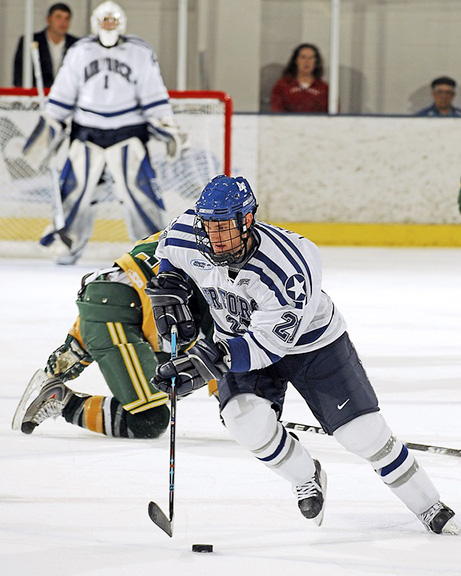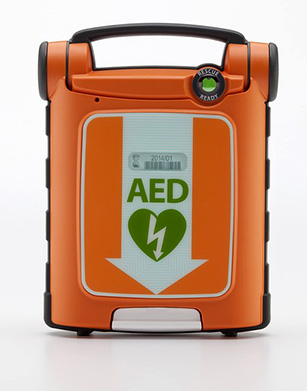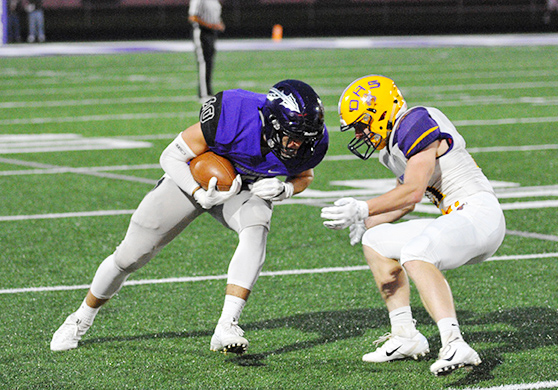The relationship of reaction time to injury susceptibility
Reaction time (RT) is a widely used term for the amount of time that elapses from the presentation of a stimulus (i.e., visual, auditory, or tactile) to either the initiation or completion of a specified physical response. Effective performance of sport-related activities often depends on rapid RT, and prolonged RT may substantially increase susceptibility to injury.
 There are two important capabilities that reduce injury risk:
There are two important capabilities that reduce injury risk:
- Rapid initiation of body movement for avoidance of an impending high-velocity impact.
- Rapid contraction of muscles for resistance to external loading that would otherwise force a joint beyond its normal range of motion.
The amount of time required to complete the neurological processes that generate a desired physical response is heavily dependent on multiple factors, including:
- The nature of the stimuli presented in a given environmental scenario
- The number of response options that must be considered before initiating the one that is deemed most appropriate
- The complexity of the muscle activation pattern that is required to produce the desired response
“Simple RT” relates to a task that requires little or no mental processing for initiation of a response, whereas “choice RT” requires some degree of stimulus interpretation to avoid initiating an incorrect response. Growing awareness of the value of a pre-injury measurement of mental function for assessment of post-concussion recovery of normal status has lead to widespread use of computerized tests of “neurocognitive” abilities, which include RT values for mouse click responses that require a considerable amount of mental processing of the visual input.
Because vision is the primary source of environmental information used to guide execution of most physical actions, improved visual detection of relevant environmental cues may provide a means to improve RT. Dynamic visual acuity is largely determined by high-velocity eye movements called saccades, which are controlled by pre-programmed muscle activation patterns.
Although the trajectory of such eye movement is not subject to voluntary control, visual training exercises appear to enhance “feed-forward” neural processes that modify pre-programmed visual search strategies, as well as promoting anticipatory responses to “triggers” for activation of movement patterns stored in memory. The brain integrates visual input with proprioceptive input from specialized nerve endings in muscles and ligaments to select an appropriate neuromuscular response pattern, which can be adversely affected by a previous musculoskeletal injury. Alteration of brain activity has been documented following ACL rupture, which results in greater reliance on visual input for selection of muscle activation patterns.
Because research evidence has clearly demonstrated females to have 10 to 15 percent slower RT than males, enhancement of dynamic visual acuity may be particularly important for the female athlete who has sustained an ACL injury.
 The speed at which the brain processes visual input may be accelerated by an activity that progressively increases the volume and complexity of visual cues that are displayed during a decreasing time interval. Surprisingly, a moderate level of muscle tension in the extremities appears to accelerate mental processing of environmental stimuli. Thus, training activities that present simultaneous cognitive and physical challenges may be superior to those that are excessively focused on one or the other. For example, a video game that simply requires rapid thumb-button responses to visual stimuli might produce a more beneficial neurological adaptation if the same activity is performed while simultaneously maintaining postural balance on an unstable support surface.
The speed at which the brain processes visual input may be accelerated by an activity that progressively increases the volume and complexity of visual cues that are displayed during a decreasing time interval. Surprisingly, a moderate level of muscle tension in the extremities appears to accelerate mental processing of environmental stimuli. Thus, training activities that present simultaneous cognitive and physical challenges may be superior to those that are excessively focused on one or the other. For example, a video game that simply requires rapid thumb-button responses to visual stimuli might produce a more beneficial neurological adaptation if the same activity is performed while simultaneously maintaining postural balance on an unstable support surface.
Similarly, the benefit derived from postural balance training might be enhanced by the addition of demands for rapid responses to changing visual cues or the presentation of cognitive challenges (e.g., spelling words, addition of numbers, recall of word sequences, etc.).
Stroboscopic vision training involves recently developed goggles that interrupt the availability of visual input during the performance of a task, such as catching a ball. The effect is similar to that produced by a strobe light in a darkened room. Research evidence suggests that this training technique improves the ability to process central visual input by increasing the volume of information stored in short-term memory. Unfortunately, the beneficial effect does not appear to occur for input from the peripheral field of view.
The time required to detect and recognize a visual stimulus is 10 to 12 percent slower for peripheral vision than central vision, which may be critical factor affecting injury susceptibility. Narrowing of the peripheral visual field and prolonged RT have been associated with the psychosocial stress imposed by negative life events, which have been shown to have an association to injury incidence. There is some research evidence to support visual training for improvement of RT associated with stimuli presented in the peripheral field of view.
RT during participation in a sport-related activity depends on visual detection of key environmental stimuli, processing of both central and peripheral visual input for selection of the most appropriate response, and the conversion of neural signals to a coordinated muscle activation pattern that will generate the desired force output. The speed of the process of converting sensory input into force output may be enhanced by specific training activities for improvement of dynamic visual acuity, cognitive information processing, or neuromuscular responsiveness, but an approach that simultaneously engages all of these components in an integrated manner may offer the greatest potential for reduction of injury risk.
A considerable body of research evidence supports the phenomenon of neuroplasticity (i.e., the capacity for reprogramming of neural circuitry), but very little evidence is currently available to support any specific training method for improvement of RT. The development of procedures for identification and remediation of slow RT is currently in its infancy, but more information on the topic will probably become available in the near future.





